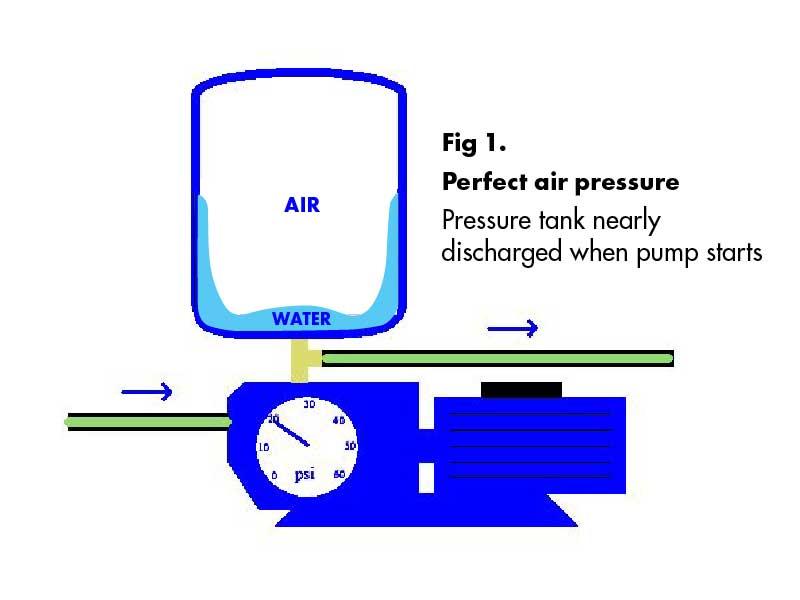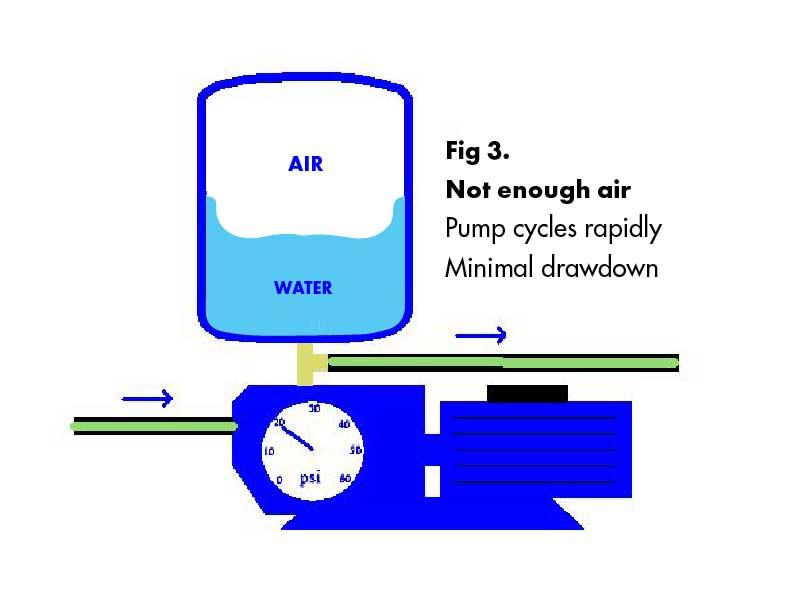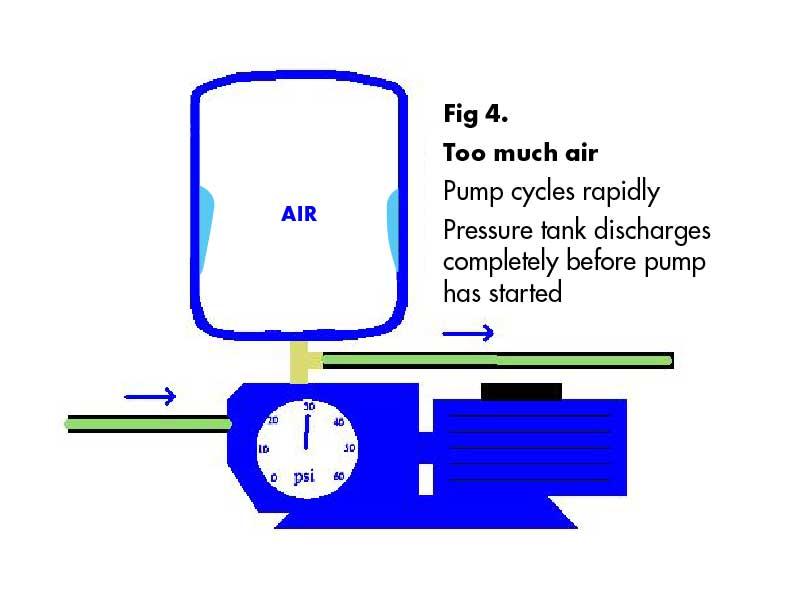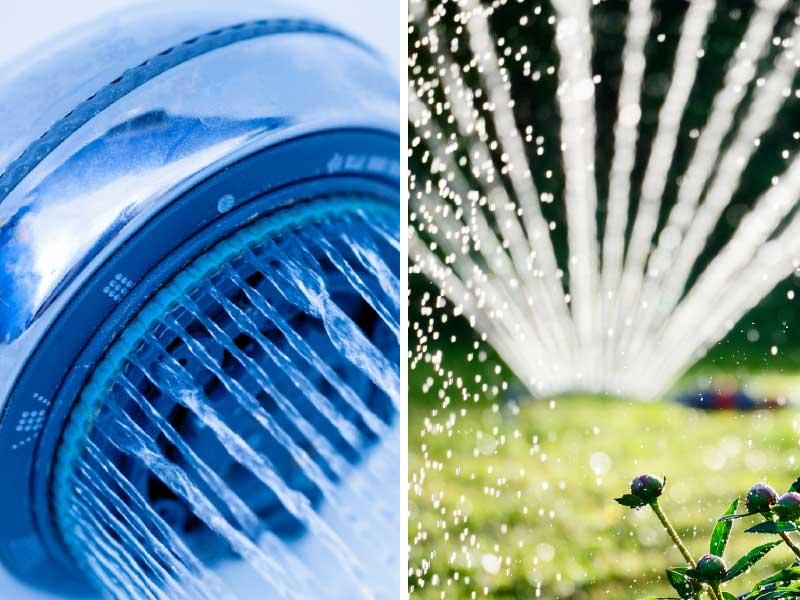Search
Latest News
Archives

How Much Air Does My Pressure Tank Need?
Simple question? It's complicated.
You might think a simple question deserves a simple answer. Unfortunately the correct answer is neither simple nor brief. Read on as Electel unravels this small but important mystery.
First things first - what's a Water Pressure Tank?
It's the big tank attached (directly and sometimes nearby). Easy. It has a threaded inlet/outlet at the bottom, where water enters and exits, and a schrader valve (air valve like
on your car tyres) at the top where air can be added – usually with an air compressor. The air and water are separated by a bladder which can expand and contract like a balloon.
...and the Correct Air Pressure is...
The correct air pressure for a pressure tank, measured with the pump off and the water pressure relieved, is 5% less than the cut in pressure setting of the pump.
Got it. But what does this mean?
Let’s simplify that a little, and add a bit of theory. The purpose of the pressure tank is to buffer the pressure and flow of the system when the amount of water being discharged by the system is less than the amount of water being pumped.
Let’s say that a pump delivers 50 litres per minute (lpm), but a shower only uses 20lpm. Because water is not compressible and to regulate the flow, the pump needs to run for only two-fifths (20/50) of the time. Without a pressure tank the pump would need to start and stop (very) rapidly to regulate itself to 20lpm.
A pressure tank contains air, which is compressible. The pressure tank accepts the extra 30lpm, compressing the air until the pressure builds up to the cut-out pressure and the pump switches off. The pressure tank can then discharge water until the cut-in pressure is achieved and the pump starts again.
In doing so, the pump is able to achieve the required two-fifths of run time in the example above without rapid cycling and without causing rapid pressure fluctuations. Practically, this means that the pump may not have to start every time someone flushes a toilet or gets a glass of water.
- Cut-out pressure – (maximum pressure) the high pressure, which when reached, turns the pump off
- Cut-in pressure – (low pressure) the low pressure, which when reached, turns the pump on
When compressing air, bigger is better.
A larger pressure tank will allow more air to be compressed, which means a larger volume of water is received between cycles. So, the second rule of pressure tanks is: the larger the pressure tank the better. Longer cycles and more gradual changes between cut-in and cut-out pressures.
So how much air pressure should I have in the pressure tank?
Take a look at the pictures (Fig 1-4) below. Note the state of the pressure tank and the pressure gauge in each. If you measure the air pressure in Fig 1 it will show 20psi, and in Fig 2 it will show 40 psi – but these are false readings as the air is being compressed by the water.
A pressure tank has an important job – to create reliable and consisten water pressure by using compressed air (in the tank) to bear down on the water (inside the tank). Consider this a 'balancing act' between relative amounts air and water within the pressure tank. When a valve is opened, water is pushed out by the compressed air in the tank. The water is then pushed out thoughout the attached plumbing (for example, in your house) until the pressure drops to a preset low on your pressure switch.
To measure the air pressure, you have to switch off the pump, open a tap to let the water pressure off, and then measure the air pressure. In the example pics, the ideal pressure would be 18psi (5% less than the cut-in pressure of 20psi). If the cut-in pressure was 30psi, the air pressure should be 27psi; 40psi – 36psi and so on.
When the air pressure is correct (Fig 1) the pressure tank still contains a small amount of water when the pump starts at 20psi, ensuring a smooth flow of water.
If the air pressure is too low (Fig 3) the tank is too full of water when the pump starts at 20psi and the pump will therefore cycle more rapidly.
If there the air pressure is too high (Fig 4) the water has discharged completely at 30psi, before the pump starts at 20psi, causing a brief interruption in water flow and a sudden surge when the pump cuts in. The pump will also cycle more rapidly.
Having either too much aire or not enough air in your pressure tank will both shorten you temper (!) and the life of your pump.
Like your car tyres, the air pressure in your pressure tank will decrease over time. Ideally you should check the air pressure very 6 months, along with your smoke alarms. Keep an eye or a ear out for your pump as well.
Get to know your pressure tank.
If you notice a sudden change in behaviour (like an overnight change to rapid cycling, or the pressure doesn’t hold in the tank when you pump it up), it may be that the bladder has perforated and the air is escaping into the water stream – time for a new pressure tank. Pressure switches can also occasionally be the cause of these problems. If you are not sure, the team at Electel will be happy to help out with advice, a checkup, or a service call.
At Electel you'll also find pumping and pressure equipment and systems from a range of leading suppliers including:
- Brown Brothers Engineers (BBEA)
- Davey Water
- Franklin Electric
- Pentair Onga (Southern Cross)
- White® International
Share:
Electel








